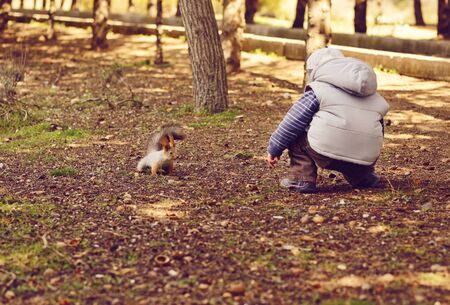Choosing the Right Walking Route
Selecting a suitable walking route is the foundation of a safe and enjoyable countryside experience for families and their dogs. In the UK, public footpaths and rights of way are well-marked, but it’s important to check local maps or use trusted walking apps before heading out. Look for routes that are clearly signposted as family- and dog-friendly, which often means gentle gradients, firm ground, and limited exposure to livestock or busy roads. Pay attention to the terrain—some paths can become muddy or slippery after rain, while others may cross stiles or narrow bridges that could be tricky for both young children and dogs. When planning your outing, factor in the distance and expected time to complete the walk, ensuring it suits the ability of everyone in your group. Always verify whether dogs are allowed off-lead and if there are any seasonal restrictions, such as during lambing season or ground-nesting bird periods. Preparing in this way helps everyone—two-legged and four-legged—enjoy Britain’s beautiful countryside safely.
2. Understanding Countryside Signs and Rules
Before setting out on a walk in the British countryside, it’s vital to familiarise yourself with the signage and rules that keep both people and nature safe. The UK’s rural areas are criss-crossed with footpaths, bridleways, and access land, each clearly marked with signs that indicate permitted activities. Recognising these signs not only helps you stay within the law but also ensures your family and dogs don’t inadvertently disturb wildlife or farmland.
Common British Countryside Signage
| Sign | Meaning |
|---|---|
| Public Footpath | Pedestrian access only; dogs allowed on leads. No cycling or horse riding. |
| Bridleway | Access for walkers, cyclists, and horse riders; dogs must be under close control. |
| Byway Open to All Traffic (BOAT) | Open to walkers, cyclists, horse riders, and motor vehicles. |
| Permissive Path | Landowner grants access; respect any seasonal restrictions or closures. |
The Countryside Code: What You Need to Know
The Countryside Code is a set of guidelines designed to help everyone respect, protect, and enjoy the outdoors responsibly. Key principles include:
- Leave gates as you find them: If a gate is closed, close it behind you; if open, leave it open unless instructed otherwise by signage.
- Keep dogs under effective control: Use a lead around livestock or sensitive wildlife areas; always pick up after your dog.
- Avoid disturbing animals and crops: Stick to marked paths and do not allow children or pets to stray onto farmland.
- Take litter home: Leave no trace of your visit to preserve the environment for others.
Countryside Etiquette When Sharing Paths
You will likely encounter farmers, other walkers, cyclists, and even horses while exploring the countryside. A little courtesy goes a long way:
- Be polite and say hello: A friendly greeting is standard practice and fosters goodwill among countryside users.
- Stand aside for farm vehicles or livestock: Give way when necessary—especially at field gates or narrow tracks.
- If walking with a dog: Keep your pet on a short lead near livestock, and be prepared to let go if chased by cattle for safety reasons.
Summary Table: Essential Do’s and Don’ts
| Do | Don’t |
|---|---|
| Follow all signage instructions | Trespass onto private land without permission |
| Respect other users’ right of way | Litter or damage property/nature |
| Keep dogs under control at all times | Disturb farm animals or wildlife habitats |
| Acknowledge farmers and fellow walkers politely | Block gateways or access routes with vehicles or bags |
This knowledge will help ensure that your countryside walks are enjoyable, respectful, and safe for everyone involved—including your four-legged companions.

3. Preparing for the Weather
When venturing out on British countryside walks, it’s wise to prepare for weather that can change at a moment’s notice. The UK is famously unpredictable—sunshine can quickly give way to showers, and mild breezes may turn blustery without warning. Before setting out, always check a reliable local forecast, but be ready for surprises.
Dress for Changeability
Layering is key when walking in the British countryside. Start with a moisture-wicking base layer to keep you comfortable, then add insulating layers that can be easily removed or added as conditions change. A lightweight, breathable waterproof jacket is essential for both adults and children, ensuring everyone stays dry during unexpected downpours.
Footwear Matters
The right footwear makes all the difference. Opt for sturdy, waterproof walking boots or wellies with good grip to handle muddy paths and wet grass—conditions which are never far away in the UK.
What to Pack
Alongside weather-appropriate clothing, pack a few essentials: a compact umbrella, waterproof trousers, and spare socks can prove invaluable. Bring an Ordnance Survey map or download an offline map app; signal can be patchy in rural areas. Snacks such as flapjacks, fruit, and water bottles will keep energy up for both humans and dogs. Don’t forget dog essentials—a towel for muddy paws and some treats for motivation go a long way.
With the right preparation, you’ll be able to enjoy the countryside whatever the weather brings, making your family walk safe and enjoyable from start to finish.
4. Dog Safety and Etiquette
Exploring the British countryside with your dog can be a delightful experience, but it comes with responsibilities to ensure the safety of your pet, local wildlife, and farmland. Here are essential tips for families to keep in mind:
Keeping Dogs Under Control
It’s crucial to maintain control over your dog at all times, especially on public footpaths and bridleways. Even the friendliest dogs can behave unpredictably when excited by new scents or the presence of livestock. If you’re unsure about your dog’s recall ability, keep them on a lead.
| Situation | Recommended Action |
|---|---|
| Open fields (no livestock) | Off-lead possible if dog is well trained and under close control |
| Near livestock (sheep, cows, horses) | Always use a short lead; never allow dogs to chase or approach animals |
| Nesting season or wildlife areas | Keep dogs on leads to protect ground-nesting birds and small mammals |
| Busy paths or near roads | Use a lead for safety and courtesy to other walkers |
Using Leads Near Livestock
The Countryside Code is clear: always keep your dog on a short lead around farm animals. Sheep worrying is a serious issue in the UK, and farmers are legally allowed to take action if they believe their livestock are under threat. A retractable lead isn’t always suitable as it may give too much freedom—opt for a sturdy, non-extendable lead instead.
Cleaning Up After Your Pet
Dog fouling is not only unpleasant but also poses health risks to people, livestock, and wildlife. Always bag up your dog’s waste and dispose of it in designated bins or take it home if no bin is available. Leaving bags behind “to collect later” is discouraged—these can harm the environment and spoil the countryside for others.
Countryside Cleaning Etiquette Table
| Location | What To Do With Waste |
|---|---|
| Footpaths/bridleways with bins nearby | Bag it and bin it immediately |
| Remote rural areas (no bins) | Bag it and carry it out—do not leave bags behind trees or gates |
| Around farm buildings/gates/stiles | Avoid leaving waste; these are working areas for farmers and livestock |
| Parks or village greens en route to/from walks | Dispose of waste in public litter bins where provided |
Summary Tips:
- Train your dog for reliable recall before venturing off-lead.
- Always use a lead around livestock and during nesting season.
- Be mindful of other walkers—some may not be comfortable around dogs.
- Carry enough poo bags and dispose of waste responsibly.
By following these guidelines, families can enjoy safe, respectful walks while helping preserve the beauty and harmony of the British countryside.
5. Navigational Awareness and Emergency Preparedness
When exploring the British countryside, reliable navigation is more than just a convenience—its an essential aspect of staying safe, particularly for families and dog owners. Even in seemingly familiar areas, weather conditions or unexpected diversions can lead to confusion or disorientation.
Map Reading Skills Matter
While many walkers now rely on GPS devices or smartphone apps, traditional map reading remains invaluable. Carry an up-to-date Ordnance Survey map for your walking area and familiarise yourself with common symbols and footpath markers. Knowing how to orient a map and identify landmarks can help you stay on course if technology fails.
Stick to Marked Routes
The UK is crisscrossed with public footpaths, bridleways, and rights of way, all clearly marked on OS maps and often signposted on the ground. For safety—and out of respect for landowners and wildlife—always stick to these designated routes. This reduces the risk of getting lost or wandering onto private or hazardous land.
Share Your Plans
Before heading out, let someone know where youre going and your expected return time. This small step is often overlooked but could prove vital in an emergency. If possible, walk with companions; if not, ensure your mobile phone is fully charged and consider carrying a portable battery pack.
If You Get Lost or Face an Emergency
If you lose your way, stop and try to retrace your steps using visible landmarks or your map. Avoid pressing forward blindly, as this can make matters worse. In genuine emergencies—such as injuries or becoming completely lost—dial 999 or 112 and ask for Mountain Rescue (in hilly regions) or the Police elsewhere. Stay put in a safe location until help arrives, making yourself visible if possible.
Final Thought
A combination of practical navigation skills, sticking to established paths, sharing plans, and knowing what to do in an emergency ensures that your countryside adventure remains enjoyable—and safe—for every member of your family, including the four-legged ones.
6. Respecting Wildlife and Farmland
As you and your family set out to explore the British countryside, it’s essential to remember that these beautiful landscapes are both habitats for wildlife and working environments for farmers. Respecting these spaces helps preserve them for future generations and ensures safety for all involved—humans, animals, and the land itself.
Observe Animals from a Distance
The UK countryside is home to a variety of wildlife, from deer and foxes to nesting birds and grazing livestock. While it can be tempting to get a closer look, it’s best practice to observe animals quietly from afar. Approaching too closely can cause unnecessary stress to wild creatures or provoke defensive behaviour in farm animals, especially if you have a dog with you. Always keep dogs on a lead near livestock or areas known for ground-nesting birds.
Avoid Disturbing Crops
Many public footpaths cross through farmland where crops are grown. It’s vital to stick to marked paths and avoid trampling over fields or climbing on farm equipment. Not only does this protect the farmer’s livelihood, but it also helps maintain the health of the countryside ecosystem. If you’re walking with children or dogs, keep an eye on them to ensure they don’t stray off the path into planted areas.
Always Close Gates Behind You
A simple yet crucial rule is to leave gates as you find them—if they’re open, leave them open; if they’re closed, make sure they’re securely fastened after passing through. This small act prevents livestock from escaping and helps farmers manage their land effectively. Teaching children about this countryside code fosters respect for rural communities and keeps everyone safe.
Summary Advice
By observing wildlife respectfully, protecting crops by staying on paths, and always closing gates behind you, your family can enjoy memorable walks while contributing positively to the stewardship of the British countryside.


